by Moe | Jun 29, 2018 | Mystical Christianity
Speaking of the Boundless Power (ie: Infinite Power or Fire) he possessed, Simon Magus famously proclaimed in his Great Declaration, “He who has stood, stands and will stand.”
For this reason, it was said that Simon had called himself the “Standing One.”
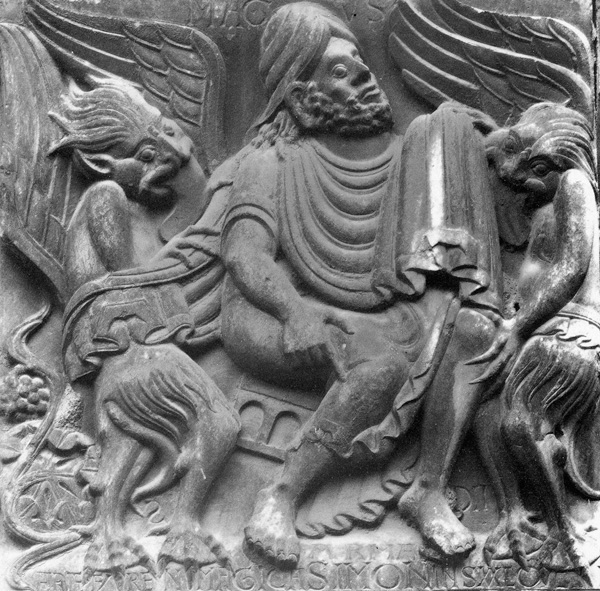
We find the allegorized Gnostic story of Simon’s supposed battle with Paul and Peter in the Clementine writings, where he is said to call himself the manifested power of the great hidden Deity (“Hel Kisai” = “Elkesai” in Gnostic lore; “Recognitiones,” i. 72, ii. 37; comp. “the one who will stand [abide] forever”; “Recognitiones,” ii. 7, iii. 11; “Homilies,” ii. 24).
According to a rare Gnostic document, the Actus Petri cum Simone, after St. Paul had left Rome, a stir arose in that city, about a man called Simon, who was at Aricia, who had worked many miracles, and said he was the great power (magnam virtutem) of God, and without God did nothing.
It is said that Simon receives a summons: ‘Thou art in Italy God, thou art the saviour of the Romans; hasten quickly to Rome.’
He promises to come the next day at the seventh hour, flying through the air at the city gate. At the appointed time smoke is seen approaching, and suddenly Simon appears in the midst. The brethren are in a state of great consternation because Paul is away, and they are left without any to comfort them, and the greater number fall away.”
Simon still tries to deceive the people by pretended miracles, but Peter exposes him. He then explains to the Men of Rome, “do you think that Peter has shown himself stronger than me, and has overcome me? And do you follow him? Tou are deceived. To-morrow, leaving you impious and godless men, I will fly to God, whose power I am, having been weakened. If, then, you have fallen, I am he that standeth (4 ‘ErrW), and I go to the Father, and will say to him, ‘ Me, the Standing One, thy son, they wished to overthrow; but having refused to agree with them, I have come to thyself.”
The people come together to see him fly. He appears flying over Rome. Peter prays, and he falls down, having his leg broken in three places. The people stone him, and all follow Peter. Simon is taken to Aricia, and then to Terracina, where he dies.”
This story is also related in the Clementine Homilies by two of Simon’s purported pupils, Aquila and Nicetas who give us the history of Simon. They had written, “He was educated at Alexandria, and skilled in the wisdom of the Greeks and in magic He wishes to be considered the highest virtue – higher than the Creator of the world.
He calls himself the Standing One, as signifying that he will always be firmly established, and having no cause of corruption In him.
The Creator of the world is not the highest God, nor will the dead lie raised. He denies Jerusalem and substitutes Mt. Gerizim. He puts himself In the place of Christ. He perverts the Law by his own interpretation of it. He was the chief of the disciples of John the Hemerobaptist. As our Lord had 11 apostles symbolizing the 12 months of the year, so John had SO, of whom one was a woman named Helena, thus symbolizing the 2Jty days in a month. The death of John occurred during the absence of Simon in Alexandria, and Dositheus succeeded to his place.
Simon, on his return, desiring the headship, pretended to be a disciple, and then accused Dositheus of not delivering the teaching correctly. Dositheus then attempted to beat him with a rod, whereupon Simon became a cloud of smoke. Dositheus, knowing that he was not himself the ‘Standing One,’ said, ‘If you are the Standing One, I will worship you.’ Simon claims that he is, becomes head of the sect, and Dositheus shortly afterward dies.”
When I search for any interpretations of this famous quote, it has been said that Simon did so imitate that he is Jesus ie: The Standing One. Hippolytus, one of the most important 3rd-century theologians in the Roman Catholic Church teaches that there is some infinite power that is at the root of the universe, but that he (Simon) believes that he was “a power above all apparently on the earth.”
One of the greatest Greek Hellenistic Christian theologians, Origen of Alexandria, reported that this was one of his greatest doctrines that he possessed “Divine Supremacy” or “Power” which is “eternal – past, present and future ie: immortal,”
From both Hippolytus and Origen, they relate what Simon allegedly calls by the names of Boundless Power, Infinite Power or Fire” and what Hippolytus says is an Infinite Power in which Simon somehow played a part or was connected to this “Infinite Power or Fire.”
By doing so, he had what Origen called “Divine Supremacy” or “Power” and I interpret that he became well-known by the Brotherhood as an immortal soul for “He who has stood, stands and will stand,” in the Infinite Power or Fire.
In the Scripture, an interpretation of Simon’s immortal connection to the Infinite Power or Fire we might find in Malachi iii. 6, where it is said, “ I am the Lord, I change not,” or in Revelation 1:8, 17-18: “I am Alpha and Omega … the First and the Last, and the Living One, and I was dead, and, behold, I am alive unto the æon of æons,” ie: AAA ΩΩΩ = The Living Space of Spaces, Æon of Æons.
This would be akin to what some people call in our modern day becoming “awake, illuminated, enlightened or what I just like to call a True Gnostic.” However, in the case of Simon, his fellow Samaritans, and the Gnostics who walked the path after him, he became what we can call a Christ, Messiah, and even a God-man ie: Jesus to the people who heard his immortal teachings and believed in his conversion story.
The writings of many great historians, Church Fathers, and Saints claimed that Simon was a God and apparently so did Roman Emperors and the Gentiles for many hundreds of years. According to a fellow Samaritan who lived at the time of Simon and was also a famous Greek historian, Saint Justin had said;
“All of Samaria practices the teachings of Simon about Jesus” (Apol. 1:6).
Speaking of the Boundless Power/Universal Fire that makes him the Standing One, it was said that Simon alleges that the nature of fire is twofold; and one portion of this twofold (nature) he calls a something secret, and another (a something) manifest.
Hippolytus explains best what Simon and these Ancient Gnostics had meant when speaking of the Universal Fire:
“And he asserts that the secret is concealed in the manifest parts of the fire, and that the manifest parts of the fire have been produced from the secret. And he says that all the parts of the fire, visible and invisible, have been supposed to be in possession of a capacity of perception.
The world, therefore, he says, that is begotten, has been produced from the unbegotten fire.
And it commenced, he says, to exist thus: The Unbegotten One took six primal roots of the principle of generation from the principle of that fire. For he maintains that these roots have been generated in pairs from the fire; and these he denominates Mind and Intelligence, Voice and Name, Ratiocination and Reflection. Anti he asserts that in the six roots, at the same time, resides the indefinite power, which he affirms to be Him that stood, stands, and will stand. And when this one has been formed into a figure, He will, according to this heretic, exist in the six powers substantially and potentially.”
And He will be in magnitude and perfection one and the same with that unbegotten and indefinite power, possessing no attribute in any respect more deficient than that unbegotten, and unalterable, and indefinite power. If, however, He who stood, stands, and will stand, continues to exist only potentially in the six powers, and has not assumed any definite figure, He becomes, says Simon, utterly evanescent, and perishes.
Hippolytus concludes, “And this takes place in the same manner as the grammatical or geometrical capacity, which, though it has been implanted in man’s soul, suffers extinction when it does not obtain (the assistance of) a master of either of these arts, who would indoctrinate that soul into its principles.
Now after He was taken up again to the Father, there arose some, saying, “I am Christ,” like Simon Magus and the rest, “whose names we have not time at present to mention” (Hippolytus. On the End of the World, Chapter IX. Excerpted from Ante-Nicene Fathers, Volume 5. Edited by Alexander Roberts & James Donaldson. American Edition, 1886. Online Edition Copyright © 2005 by K. Knight).”
St Cyril of Jerusalem (a.d. 346) in the sixth of his Catechetical Lectures had said of Simon Magus, “was the father of all heresy.” Cyrill states that “After being cast out by the Apostles he came to Rome where, having joined to himself a profligate woman of the name of Helen, he gave out that it was he who appeared as the father on Mt. Sinai (Holy Mountain), and afterwards, not in the flesh, but in appearance [ioaiau) as Jesus Christ, and, finally, as the Holy Ghost, according to the promise of Christ.”
St. Cyrill further stated, “His success at Rome was so great that the emperor Claudius erected a statue to him with the inscription Simoni Deo Sancto.”
Moe is the founder of GnosticWarrior.com. He is a father, husband, author, martial arts black belt, and an expert in Gnosticism, the occult, and esotericism.
by Moe | Jun 27, 2018 | Quotes

Moe is the founder of GnosticWarrior.com. He is a father, husband, author, martial arts black belt, and an expert in Gnosticism, the occult, and esotericism.
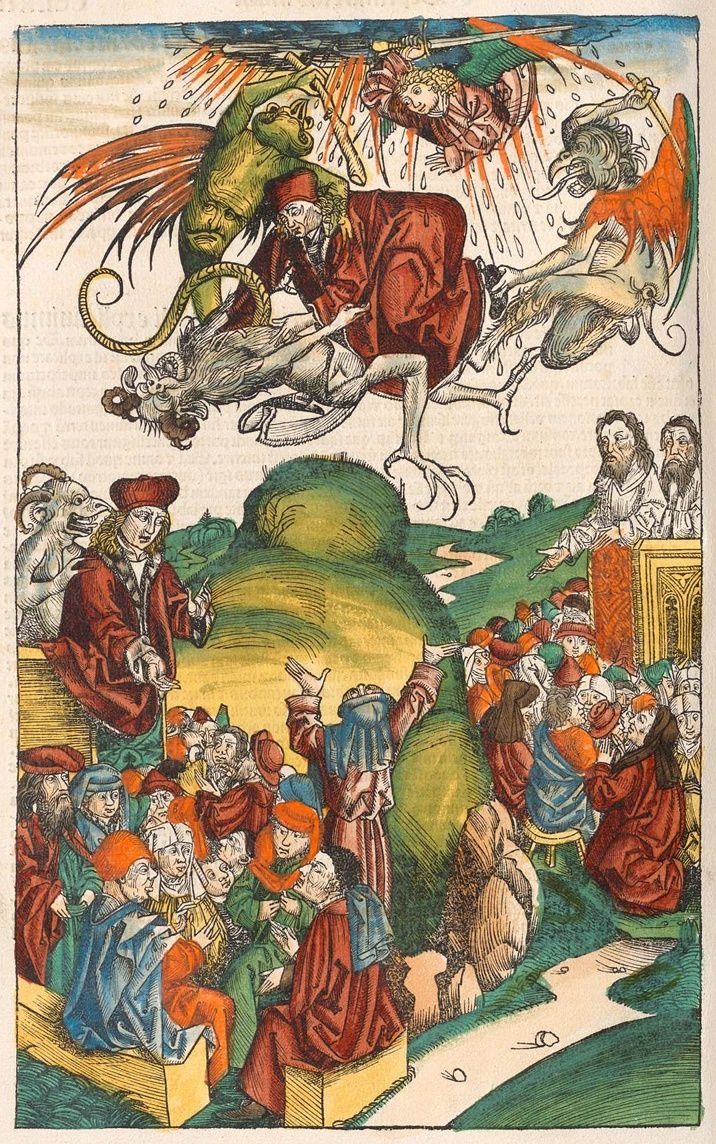
by Moe | Jun 24, 2018 | Gnosis, Satanism
Perhaps no other figure in modern human history has been talked about, attacked, demonized and slandered more than “Satan”.
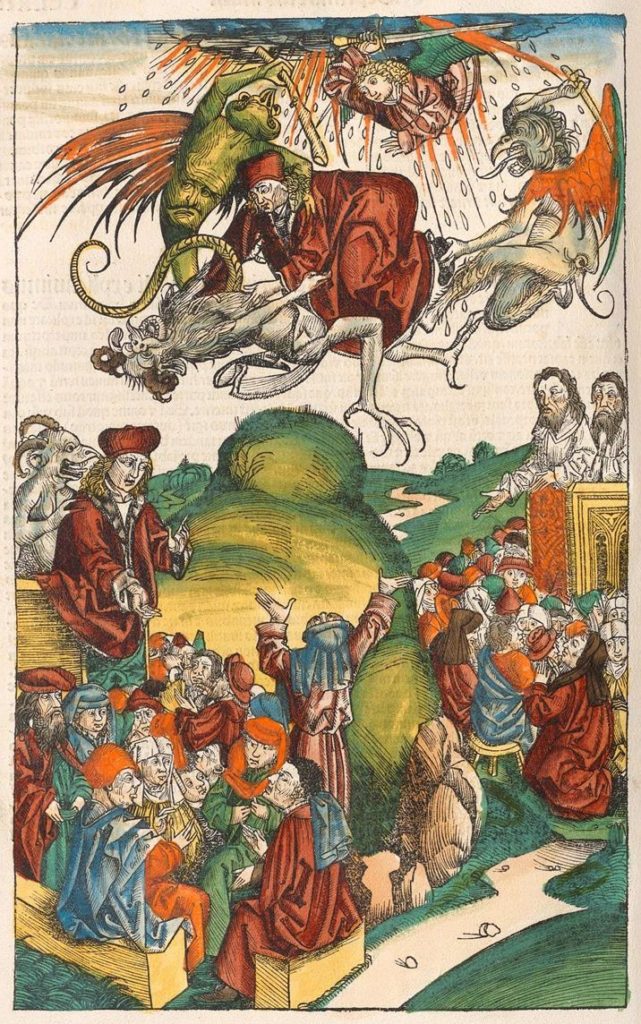
In the Christian world, Satan has been known by various names such as the adversary, the Liar, the Great Dragon, the Prince of Evil Spirits, and God of this World, to name a few.
What I find fascinating is that when I researched the dark history of the early Catholic Church’s viewpoints about an evil man who they like to call a Liar and deceiver, I discovered that there was actually a real person who they called Satan and they battled as their adversary with words and magic.
In fact, they also called him the first Gnostic.
The same Church who has carried the story of Satan for thousands of years has brought the Accuser to us in the year 2018 by stating that Satan is in fact, a real person.
For example, the Catholic Pope Francis who is the Vicar of Christ to over a billion people says that Satan is, in fact, a real person who is more intelligent than us. In December 2017, Francis told a Catholic television channel TV2000, “He is evil, he’s not like fog. He’s not a diffuse thing, he is a person. One must not talk to Satan, if you start talking to Satan you are lost, he is more intelligent than us.”
The Pope said, gesturing with his hands, “He’s more intelligent than us, and he’ll turn you upside down, he’ll make your head spin. “He always pretends to be polite – he does it with priests, with bishops. That’s how he enters your mind. But it ends badly if you don’t realize what is happening in time. (We should tell him) go away!” he said.
So, who is this Satan that Pope Francis talking about?
If we want to find out who the Church gave the label of Satan, all you have to do is research who the Church Fathers had called Satan and who were their main adversaries and accusers at that time.
And who do we find? – THE GNOSTICS!
The same group the Chruch had battled as “their adversaries” in the early years of Catholicism and the same doctrines of Gnosticism of whom our modern Pope Francis has been warning fellow Catholics about.
This all makes perfect sense. After all, the word Satan is derived from the ancient Greek Σατάν (Satán) and the Hebrew שָׂטָן (Sātān) which means “adversary, the accuser, to show enmity to, oppose, plot against,” from root s-t-n “one who opposes, or obstructs.”
The Gnostics were adversarial to the Church and Rome. They would be the men of knowledge who opposed the Church’s teachings and would plot against her aims.
As I mentioned above, no other figure has been talked about, attacked, demonized and slandered more than “Satan” and in the same hellish breath, in the history of the Church, no other person in the world has been demonized and slandered more than Simon Magus (Simon the Sorcerer, or Simon the Magician).
If you look through the history of the Church, there has only been one alleged real person who was called Satan and that person is Simon Magus. Not only was he called the firstborn of Satan but he was also given the most illustrious title of the “First Gnostic.”
What fascinates me about this story now that I’m a grown man who doesn’t scare so easily is that why would a person who is labeled the “First Gnostic” also be considered the Son of Satan?
After all, the word Gnostic is simply from the ancient Greek gnōstikos, from gnōstos which means “known and to know” based on “cognitive or intellectual learning.” In other words, to be a conscious being. A person who we would call today “awake” or “illuminated.”
If we look at the infamous long history of the Church and how it made war on all knowledge it deemed heretical. The burning of millions of books and people for the knowledge they possessed can easily fan the sulfuric flames of hell for eternity.
It is obvious to me that the early Church made a war on what we would simply call today “knowledge” and on the men who knew, AKA the Gnostics with their chief leader, “Simon Magus.”
The Church Fathers had given him the titles of not only the “First Gnostic” but also the devilish title of “Satan” and his followers would also be slandered with names such as the antichrists, demons, and children of the devil.
2nd century Church Father, Church representative Saint Irenaeus went to battle with the heretics in his Five Books Against Heresies, today also known as “On the Detection and Overthrow of the So-Called Gnosis. Irenaeus had helped lead the attack on Gnosticism and attack on the Gnostic God Simon.
From this point forward Simon Magus became an apostate to the Chruch because his teachings of Gnosis (Spiritual Knowledge) were considered heretical to the Church. He would be officially known in Christianity as the “father of all heresies” and a man who would be given the name of “Satan.”
Irenaeus said that Siom was one of the founders of Gnosticism and calls him and his followers, “offshoots of Satan.” He (B. i. ch. xxiii.) traces the origins of all sorts of heresies to Simon and speaks of him keeping the prostitute Helena. According to Irenæus, Simon Peter was the vicar of Jesus Christ, and Simon Jupiter (Magus), was the ‘firstborn of Satan’ and ‘the first of all heretics’.
Now, if we look to Simon’s own people, he was known as a God.
Perhaps, this is why the Roman Latins who recently conquered these same said people decided to launch one of the oldest and fiercest propaganda campaigns against Simon and his followers. Something to think about as you read on.
The Greek philosopher-Apologist in the early Christian Church, Saint Justin Martyr, had said Simon was a native of Cæsarea and was known as a God to his people. In his First Apology (XXVI), Martyr stated;
“After the ascension of Christ into heaven, the devils brought forward certain persons, who said that they were gods; and these not only are not persecuted by you but are even held in honor. Simon, a Samaritan from the village of Gitton, who in the days of Claudius Caesar, by the assistance of devils, performed miracles in your royal city of Rome, and was accounted as a god, as a god was honoured with a statue, which was placed in the river Tiber between the two bridges, and had this inscription in Latin;
“Simoni Deo Sancto,” “To Simon the holy God.”
Martyr concluded, “And almost all the Samaritans, and a few even of other nations, worship him, and acknowledge him as the first god.”
In Acts 8:9—10, the Samaritan the Gnostic Magus is given the title “the Great Power of God” (NIV) or “the power of God that is called Great” (NRSV), thus perhaps identifying him as either God himself, a lesser god, or a powerful representative of God.
Early Church theologian, Origen of Alexandria writes, “It escapes the notice of Celsus that the Simonians do not in any way acknowledge Jesus as the Son of God, but they call Simon “the Power of God.”
This title of “the Power of God” is very similar to Satan’s title of the “Prince of the Power of the Air.”
Origen writes, “It escapes the notice of Celsus that the Simonians do not in any way acknowledge Jesus as the Son of God, but they call Simon the Power of God.” In the time of Origen the followers of Simon had dwindled in number to such a degree that he writes, “I do not think it possible to find that all the followers of Simon in the whole world are more than thirty: and perhaps I have said more than there really are” (Conlr. Cels., i.57, quoted by Alford, Gr NT, Acts 8 9).
It is interesting to note that Simon Magus was once known as a God in Rome because he was later symbolized as the Supreme Leader of the Gnostics and their heresies were said to derive its origin from Simon. For this reason to the Church Fathers, he would officially become known in the Scripture as “Satan.”
This person was a Samaritan by birth, from whence he went to Alexandria to receive his education. What many people do not know is that Simon (Satan) was the favorite disciple (student) of John the Baptist and please keep in mind that John the Baptist was also the teacher of Jesus.
This means that Satan, AKA Simon knew Jesus and vice versa.
It was said that Simons alleged great sin was that he had tried to purchase the gift of the power of working miracles like Philip’s conferring the Holy Ghost by the laying on of hands. His request refused because of the unworthy motives which had prompted it and he was cursed by Peter.
In the New Testament, Simon, I mean Satan is “the great dragon,” “old serpent,” “devil,” and “Satan who deceives the whole world.” Simon was also known as the “Prince of the Power of the Air, the spirit which worketh in the children of disobedience, and the evil hosts of the heavenly places, the rulers of the darkness of this world.”
To the Church, Simon Magus would be known as the First Gnostic was also Satan. The immortal adversary of the Church of Rome and the accuser of Thy False Brethren who is a power of the left hand of God, and has authority to do harm to those who know not God.
As I mentioned above, Pope Francis has claimed that Satan is not a metaphor or a nebulous concept but a real person armed with dark powers. The Pope made these remarks during a television interview in December 2017 and has made similar claims all throughout his papacy.
Quite possibly, this is the Apocalypse and the Pope and the Vatican know that Satan is back…
As it is said in 2 Corinthians 11:14 – “If their master himself, who is the “prince of darkness,” the most alien to light, does so, it is less marvelous in the case of them who are his servants.” (Lu 22:54; Eph 6:12″)
The first and last Gnostic. The Alpha and Omega. The rock I will build my Church.
Moe is the founder of GnosticWarrior.com. He is a father, husband, author, martial arts black belt, and an expert in Gnosticism, the occult, and esotericism.
by Moe | Jun 20, 2018 | Freemasonry, Meaning of Symbols
The act of U.S. Congress of the old Confederation, passed June 14, 1777. declared the inaugurating the stars and stripes, “That the Union be thirteen stars, white in a blue field, representing a new constellation.” (United States Congressional serial set, Volume 1276)
Approximately 5 years later it was on this day for the summer solstice, June 20, 1782, when Congress officially adopted the secret design for the U.S. Great Seal by Irishman, Charles Thomson. Over the next five years, more secret symbols were placed in the design such as an olive branch representing peace was placed in the ‘right talon’ (not a claw) of the Phoenix and a bundle of 13 arrows in the ‘left talon’ representing war.
Over the head of the Phoenix, there appear the 13 stars that are arranged in rows of 1-4-3-4-1, forming a six-pointed star. This original design was officially adopted as the National Seal in 1787.
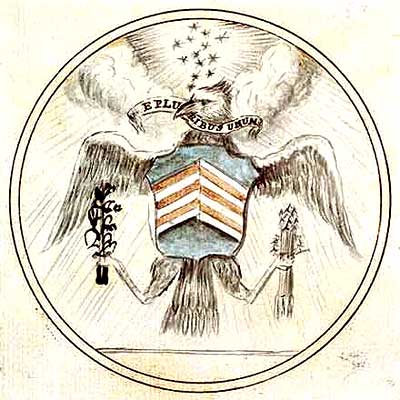
Please note, the placement of these symbols in the talons is important.
The question we must all ask, what do these secret symbols mean and what was this a “new constellation” the Congress was speaking of?
In the 1820 passports prepared by U.S Secretary of State, John Quincy Adams, we can find the Phoenix of Adams and the 13 stars were arranged in the form of a lyre. We may find some clues like the Phoenix of Adams held in its beak the constellation Lyra. (representing a new constellation)
The US Seal which now has the alleged shield looks almost exactly the same as the constellation Lyra minus the “Missing Symbol” – The Lyre.
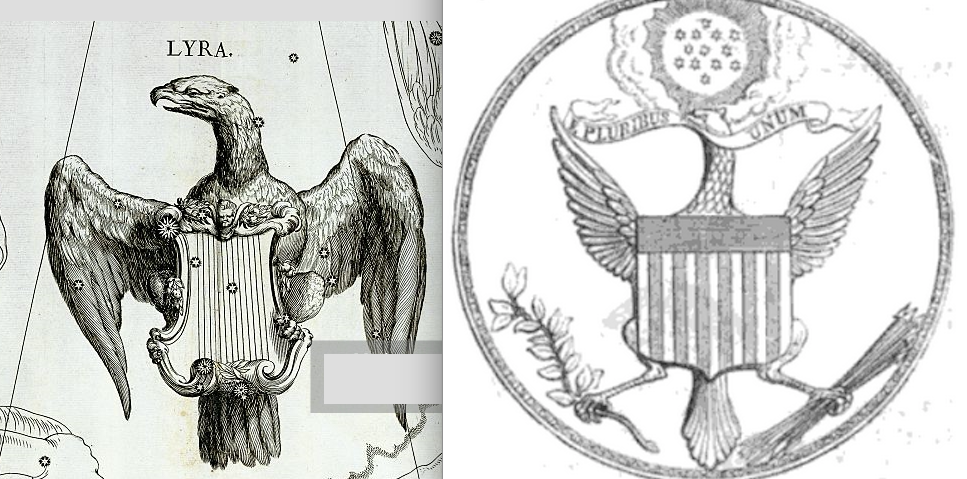
This event is described in detail in the Magazine of American History, Volume 19;
John Adams, subsequently President of the United States, the father of John Quincy Adams, who was also a President of the United States, was chairman or president of the Board of War in 1777. In possession of his family, as I was informed by his grandson, the Hon. Charles Francis Adams, is an heirloom, a seal representing an eagle holding in his beak the lyre of Orpheus, an old constellation of thirteen stars, these stars radiating into a circle of thirteen stars, with the motto;
“Nunc sidera ducit, “Now it leads the stars,” quoted from the description of the lyre of Orpheus in the Astronomicon of Manilius.”
Through the harmony of his lyre Orpheus is represented as having silenced the vigilance of the regions of Pluto, Hades, or theShades, returned to earth, and led trees and rocks, vivified by the magic of his lyre, to follow where he led. Deified as a constellation of thirteen stars, his lyre was said to lead these celestial bodies, as it had silenced those of Hades and led the animate and inanimate bodies terrestrial, and whirls the immense orb of the world in its revolutions.”
Here is another old image of the Phoenix with Lyre from an old U.S. passport from the 1800’s. It is unmistakable.
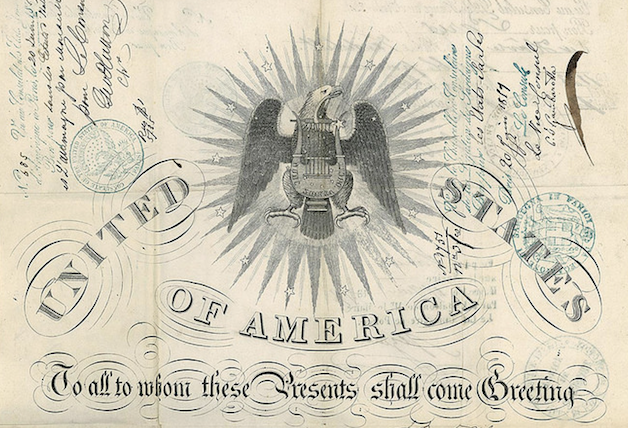
If you think I might be mistaken, look for the Double stars in Lyra. Epsilon forms one corner of a roughly equilateral triangle with Vega and Lyra. The Summer Triangle is a large star pattern made of 3 bright stars in 3 separate constellations. Look for it ascending in the east on in the evening of June.(EarthSky)
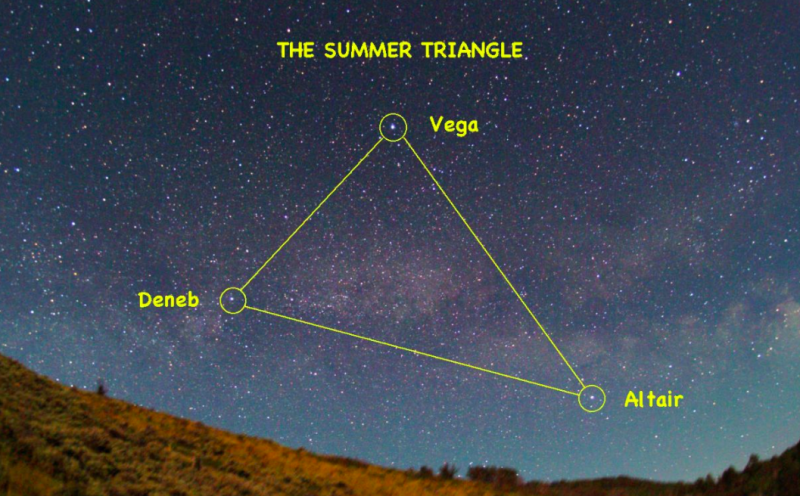
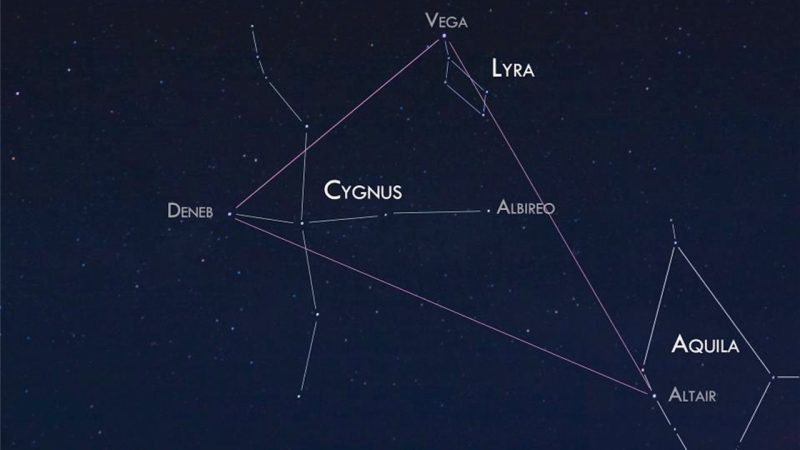
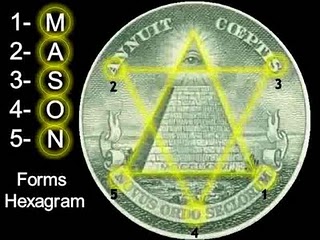
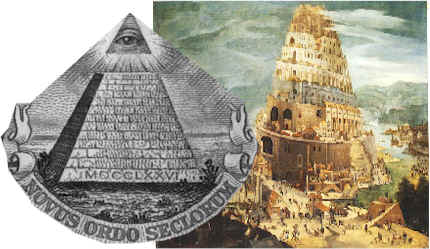
What are the origins of the symbols on the U.S. Great Seal?
If we go back in time to the birth of Western Civilization, we will find that the symbol of the Lyre was the Ancient national symbol of the Cretans.
The first Lyra was said to be modeled after a bow and arrow which makes sense since the Cretans were well known as the world’s most famous Archers. It was the most popular musical instrument on the island of Crete and in the world for thousands of years.
Diodorus Siculus said the Lyra invented on the Mediterranean island of Crete. History later validates this claim by Siculus with the earliest picture of a lyre with seven strings that appears in the famous sarcophagus of Hagia Triada (a Minoan settlement in Crete), which was used during the Mycenaean occupation of Crete (1400 BC).
The Cretans (Phoenicians, Ionians, Argives, and Minoans) also had laws concerning music, and for many ages, they played the harp for their kings, queens, healing, entertainment, and for their military marches. For this divine reason, the harp would become one of the main symbols for these people who we know of by the names of the Cretans, Phoenicians, Ionians, Minoans, Arcadians, Atlanteans, Persians, Greek Hellenes, Hebrews, Scythians, Saxons, Angles, Irish, Picts, and Celts.
They would leave their symbols such as the Lyre forever all over the globe in the lands they had conquered, including Ireland and America.
One of the founders of the ancient Gnostic mysteries of Orphism, and possibly the mythical Orpheus himself was said to be a Cretan man named Epimenides Gnosis (Greek: Ἐπιμενίδης), whose tattooed body and skin were held venerable by the ancient Spartans because it was said to reveal “secret things.” Epimenides had lived in the 7th century B.C. and was born in the city of Gnosis, which today is called the city of Knossos.
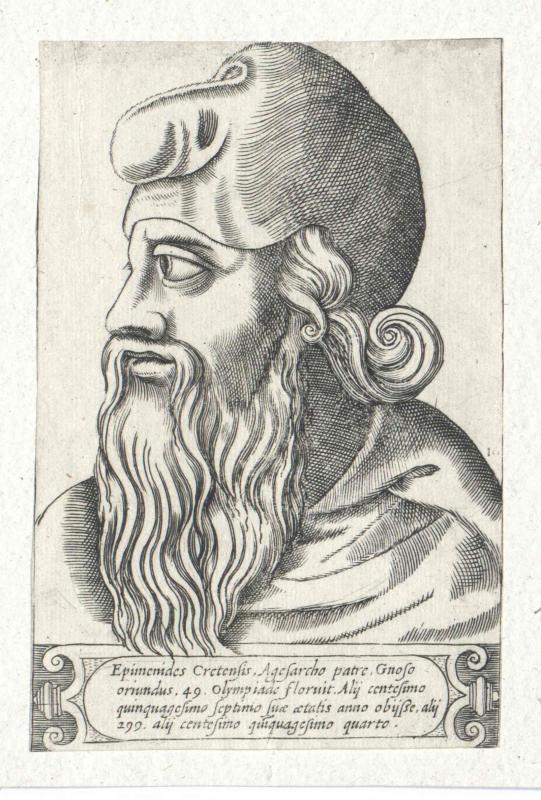
Plutarch tells us that Epimenides was almost like a messiah to the Greeks at the time, because he had purified Athens and the only reward he would accept was a branch of the sacred olive, and a promise of perpetual friendship between Athens and Knossos. Plutarch had written;
“Epimenides purified Athens after the pollution brought by the Alcmeonidae, and that the seer’s expertise in sacrifices and reform of funeral practices were of great help to Solon in his reform of the Athenian state. The only reward he would accept was a branch of the sacred olive, and a promise of perpetual friendship between Athens and Knossos (Plutarch, Life of Solon, 12; Aristotle, Ath. Pol. 1).”
It was Orpheus’s lyre that was triumphant over the forests and deserts, the deities, and the Furies. Just like Epimenides was triumphant over the plague in Athens.
Here is an old image of Orpheus with his Lye and what looks like a Phoenix in the upper left corner.
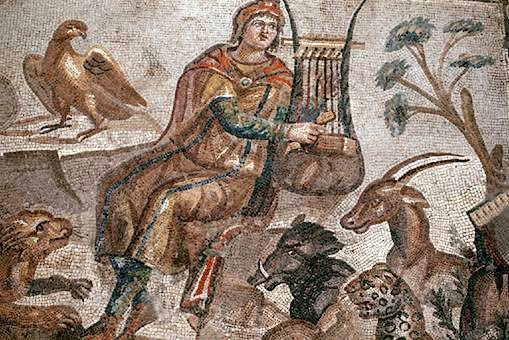
For his Great Work, Epimenides would be immortalized in the Heavens as the Thirteen Stars of Orpheus. The Lyre of Orpheus, received into the heavens after his death.
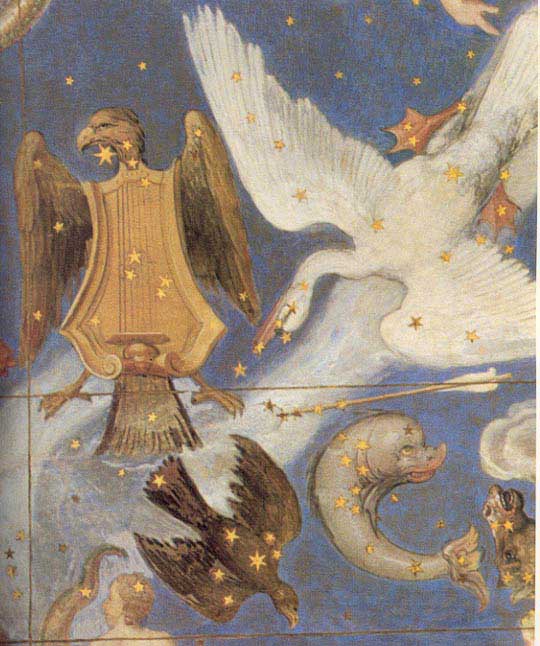
The legend of Lyra Constellation tells the story of Orpheus, who was given a harp by the god Apollo. Lyra constellation lies in the northern sky, which is best seen in June through October in the northern hemisphere and is at its highest in the midnight sky in the months around June. It is best known for its brightest star, Vega and also Arcturus.
This is where we get the story of the Cretan Gnostic Princess and Corona Borealis, the Northern Crown, which is an almost perfect semi-circle of stars. Ariadne was immortalized in the halls of Gnosis and Freemasonry for helping her lover, Theseus who was the mythical founder-king of Athens to conquer the Minotaur and deliver him out of the Labyrinth by the means of a Thread.
For doing so, she was also known as the “Mistress of the Labyrinth“, As noted on the Linear B inscription from Knossos, “to all the gods, honey… to the mistress of the labyrinth honey.”
To put another Masonic plot on this story, we find that Ariadne had acquired the assistance of one of the first known Freemasons in history, Daedalus. He is one of the most famous artists and builders of Crete that were the forerunners to the Grecian building communities and Roman Collegia. The very same ancient guilds which modern Freemasonry descends.
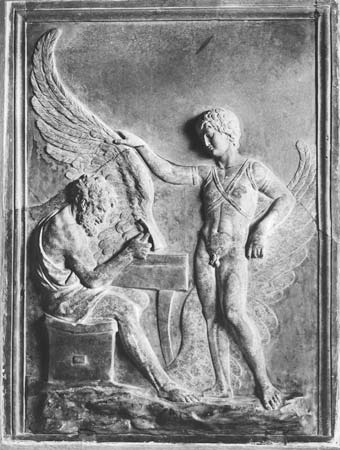
Later Ariadne was immortalized in the heavens by being assigned a small constellation in the Northern Celestial Hemisphere of seven stars called, Corona Borealis which in classical mythology signifies the crown given by the god Dionysus to the Gnostic princess Ariadne and set by him in the heavens. Its brightest stars form a semicircular arc. Its Latin name, inspired by its shape, means “northern crown”.
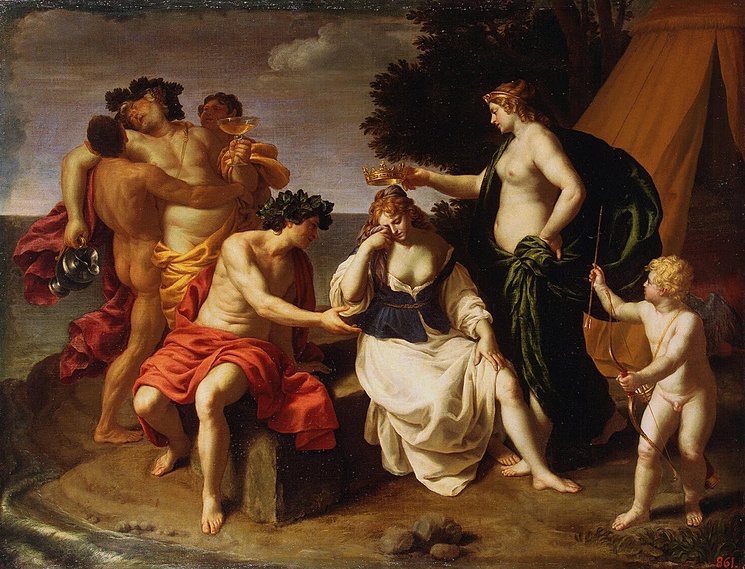
So, we have the Lyre, 13 Stars of Orpheus and Olive Branch as verifiable symbols originating with the Ancient Gnostics and First Freemasons in Crete. That is interesting given the fact that the Masons helped found the United States of America and I believe the first Freemasons hail from Crete.
Conicidence or Divine Providence?
What does a ‘Great Seal’ mean?
The meaning of the word ‘seal’, when used in the context of a national symbol such as the Great Seal of the United States, would mean “a symbol and or thing regarded as a legal confirmation or guarantee of something or authenticity.” Therefore, we can say it is a “legal seal” governed by law.
With that said, when a country such as the U.S.A decides to “create a legal seal”, they must do so under the “ancient international laws of heraldry.” We can find that the meaning of the word heraldry is derived from the word ‘herald’, which means, “an official messenger bringing news; a person or thing viewed as a sign that something is about to happen.”
Heraldry means the practice of devising, granting, displaying, describing, and recording coats of arms and heraldic badges. In each country in the world, you will find symbols that represent, and/or as a form of identification of the regime in control of the land and or a nation.
This is why the Chinese teacher, politician, and philosopher, Confucious once famously said, “Signs and symbols rule the world, not words nor laws.”
However, I would respectfully disagree with the Chinese philosopher because the facts are symbols, seals, and coats of arms are the world’s most important “legal symbols” that have been used since Ancient Egypt and the land of the Hittites. The Egyptians and Hittites adopted their own unique “ideograms” or symbols to reflect their particular races, ideologies, religions, laws, Gods and or spirits they associated themselves with.
As time went on, the inheritors of these races absorbed much of their culture and DNA into the very fabric of their own societies such as the Ethiopians, Phoenicians, Greeks, and Romans who all continue this tradition of heraldry till this very day.
Now that we know that our national seal is a “legal symbol that identifies the regime in control of our nation,” and we know that this regime “Trusts in God,” we can then study the symbols contained in the seal to discover not only what they mean, but what they represent and who or what “regime is in control of our nation”
We can find the importance of seals in the New Testament Bible which in the West is our Divine and Sacred Laws for Christians. The bible is called the New Testament because it is a legal document much like a will or testament is today which means “a person, the testator, expresses their wishes as to how their property is to be distributed at death, and names one or more persons, the executor, to manage the estate until its final distribution.”
For example, in the Book of Numbers, the children of Israel were commanded to gather beneath these emblems and declare their pedigrees ie: races for it is said in 2 Timothy 2:19; “Nevertheless, the firm foundation of God stands, having this seal – The Lord knows those who are His,” and, “Everyone who names the name of the Lord is to abstain from wickedness.”
Jesus was from the Tribe of Judah (Idea) whose main symbol of heraldry was the lion and we later find the lions, well actually what are called in French “Passant Gardant” with William the Conqueror (King of England),” in which all American presidents are said to be descended from. Our first President who was also a Freemason, George Washington is the 19th Great-grandson to William the Conqueror.
The Lion and leopard or the Lion ‘passant gardant’ which are now the symbols of the royal majesty in the coat of arms of Wales, England, and Estonia are passant gardant. In French blazon this charge is called a léopard; a lion rampant gardant is a léopard lionné and a lion passant with his head in profile is a lion léopardé.
FIAT LUX! Let us all open our Holy Bible to the 12th chapter of Ecclesiastes and make sure both points of the compass are elevated above the square with the “G” in the ‘middle.’
The lion has always been the main symbol of the Gnostic mysteries. 33rd degree Freemason and author, Manly P. Hall had written in The Lost Keys of Freemasonry;’
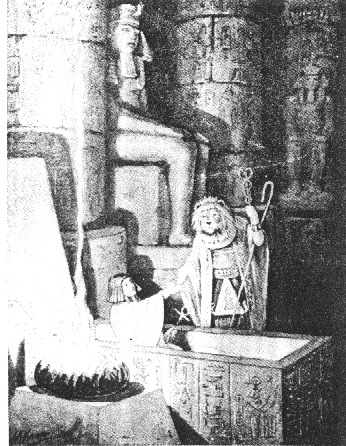
“The picture shows how the grip of the Lion’s Paw was given in the Pyramid Mysteries. The priest wore over his head the mask of a lion. By this grip, the spirit in man, long buried in the sepulcher of substance, is raised to life, and the candidate goes forth as a builder entitled to the wages of an initiate.”
Today, we find the “Eagle (ie: Phoenix) of the Caesars” as evidence of the antiquity of heraldry itself with the National Symbol of several countries all around the world representing their noble status and descent.
Yes, including the United States of America…
Hence, the official motto of the United States of America – “In God We Trust.”
Let me please add that when we say the “Eagle (ie: Phoenix) of the Caesars”, we mean “Julius and Augustus Caesar.” Julius Caesar was known as “Divus Iulius” (Latin for “Julius is God”), and his son Augustus would be given the title of Divi Filius (Latin for the “Son of a God”).
In Fragments of a Faith Forgotten: Some Short Sketches Among the Gnostics, George Robert Mead had written about the event beautifully, “As the honorific inscriptions said of the birthday of the Roman Emperor Augustus, so said after them all Christians of the natal day of Jesus.”
Later, Adam Weishaupt, of the Bavarian Illuminati, describes Caesar’s regime and their methods of Disorder;
“Jesus of Nazareth, the Grand Master of our order, appeared at a time when the world was in the utmost Disorder, and among a people who for ages had groaned under the yolk of Bondage. He taught them the lessons of reason. To be more effective, he took the aid of Religion–of opinions which were current–and in a very clever manner, he combined his secret doctrines with the popular religion, and with the customs which lay to his hand.”
As the Masons say, ‘ORDO AB CHAO.’ 😉
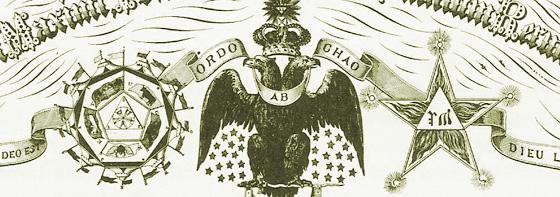
Moe is the founder of GnosticWarrior.com. He is a father, husband, author, martial arts black belt, and an expert in Gnosticism, the occult, and esotericism.
by Moe | Jun 20, 2018 | Freemasonry, Meaning of Symbols
On the 4th of July, 1776, immediately after the declaration of independence, the “Continental Congress” appointed Freemasons Benjamin Franklin, John Adams, Thomas Jefferson and a mysterious man from Geneva Spain with a French name, Pierre Du Simitiere as artist and consultant to a committee to prepare a device for a Great Seal of the United States.
The word continental means “coming from or characteristic of mainland Europe or an inhabitant of mainland Europe” and that is exactly who this Continental Congress was. Also, an interesting note is that Pierre’s last name, Du Simitiere is not a common surname whatsoever, in fact, you will not find it anywhere!
Simitiere is derived from the French cimetière and Latin word cimeterium. In English this is “cemetary,” which originally meant “an area of asylum around the church.” The meaning was said to be passed from church Latin into French.
The Masonic committee lead by the famous Freemasons and this mysterious man had submitted their design which was said to be a mixture of political and religious images on the 10th of August 1776.
The Seal they proposed contained the rose of England, the thistle of Scotland, the harp of Ireland, the fleur-de-lys of France, the imperial eagle of Germany, the lion of Holland, two goddesses, one of Liberty, the other of Justice, with Pharaoh and Moses on the Red Sea. (United States Congressional serial set, Volume 1276).
It was truly, a religious international symbol representing the “Founding Fathers and their Founding Countries.” However, this first Masonic design of the Great Seal was not adopted by the Congress.
In 1782, Freemason William Barton had proposed a Phoenix in flames as the original Great Seal in America as a symbol of a renewed liberty. Eventually, the first design of the Great Seal of the United States would be attributed to Charles Thomson and was adopted immediately by Congress on June 20, 1782.
In Thompson’s old design of Seal, we can see what some people might think is an eagle but in reality, is the mythical purple bird of the ancient mysteries known as a Phoenix with a scroll in its beak with the 13 Latin letters, E Pluribus Unum, meaning in English, ” Out of Many, One”.
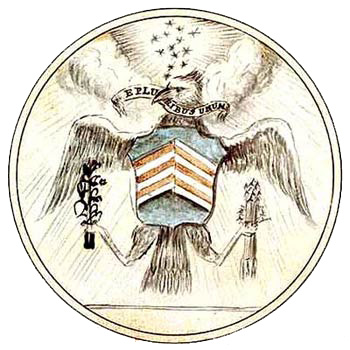
According to 33rd Degree Freemason and author, Manly P. Hall, the United States was founded by Masons trained in European mysticism. Hall had stated in his infamous book, The Secret Teachings of All Ages that the mysterious symbol mistakingly thought to be the American Eagle, in reality, is the Phoenix. (The Secret Teachings of All Ages – pages XC-XCI)
It is also important to note that the 13 stars and the number 13 has a significant meaning to the Masons but it does not mean what most people think it does. The common interpretation is that it represents the 13 colonies but that is not true.
Hall had said, “The significance of the mystical number 13, which frequently appears upon the Great Seal of the United States, is not limited to the number of the original colonies.” He had written in his book, The Lost Keys of Freemasonry – “These were the immortals to whom the term ‘phoenix’ was applied, and their symbol was the mysterious two-headed bird, now called an eagle, a familiar and little understood Masonic emblem .”
Please keep in mind as you read this article that Secret Society of the Freemasons played an instrumental part in the founding of our country so it is only natural that they left their secret symbols wherever performed their Craft and whatever important documents and monuments they worked on.
If we are to ask our ancient historians like the Father of History, Herodotus and the Roman Senator and Historian, Tacitus both claimed that the “first appearance of the Phoenix” began in the reign of Egyptian Pharaoh Sesostris (Seth, Sethos, Set I). Seth was the legendary king of ancient Egypt who led a military expedition into parts of Europe, as related by Herodotus. Manetho called him master of the Mediterranean and according to Diodorus Siculus (who calls him Sesoösis) and Strabo, he conquered the whole world.
The legend of the Phoenix was first told in the City of the Sun or in Greek, Heliopolis where the first written records were given to us by Herodotus in his work titled Euterpe. He had written how the Phoenix was first seen in Heliopolis during the reign of Pharaoh Seth (Seti, Suthy or Sesostris) and then in the reign of Amasis shortly after the days of Ptolemy.
Pharaoh Seth plays a prominent role as the main hero in the Book of the Dead. The most important temple in the City of the Sun at this time was the “Mansion of the Phoenix” or “Mansion of the Benben.” It has also been called the temple of the sun. In Utterance 600 of the Pyramid Texts speaks of Atum as you rose up, as the ben ben, in the Mansion of the Benu in Heliopolis (Hart, p.16).
It also important to note that the meaning of the symbol of the Phoenix was rebirth, and reincarnation and the color purple unique to this firebird has long been associated with royalty since time immemorial.
The 6th and 7th-century archbishop, Isidore of Seville had said the name of the Phoenix was derived from its purple-red hue, and was considered “the royal bird” and therefore also referred to as “the purple one”. In medieval Latin glossaries, the Phoenix is called ‘the purple one’ because it was ‘the royal bird’. The Latin word for purple is purpureous – meaning shining or splendid.
Thus we can say that the Purple Phoenix represents royalty…
It’s important to note that the Founders of our country were also involved in foreign politics.
For example, it was said that the designer of the original seal, Charles Thomson was an Irish-born Patriot and when they say patriot, they do not mean for the United States, they mean for the “Secret Masonic Continental Brotherhood.” After all, he was from Ireland and all the Founding Fathers had hailed from mostly European countries with secret associations and apparent royal connections and backers.
It was said that Thomson’s role as secretary to Congress was not limited to clerical duties and according to biographer Boyd Schlenther, Thomson “took a direct role in the conduct of foreign affairs.” In fact, all the Founding Fathers were involved in foreign affairs because these affairs were directly involved in the forming of the United States of America with the Great Seal being the most important “royal symbol” of this event
Over the next five years, more secret symbols of the Brotherhood were added to the Great Seal. I will discuss some of these in my next articles.
Moe is the founder of GnosticWarrior.com. He is a father, husband, author, martial arts black belt, and an expert in Gnosticism, the occult, and esotericism.




















